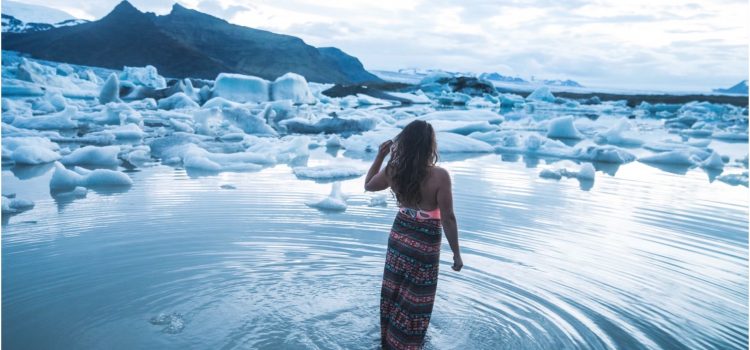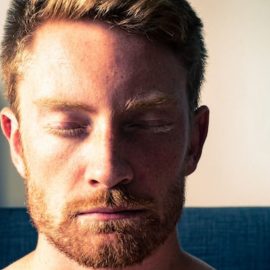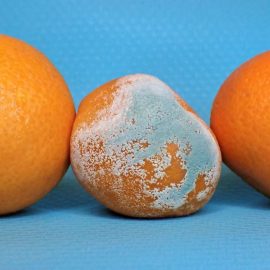

This article is an excerpt from the Shortform book guide to "The Wim Hof Method" by Wim Hof. Shortform has the world's best summaries and analyses of books you should be reading.
Like this article? Sign up for a free trial here.
What is Wim Hof cold therapy? How can it improve your health?
In his book The Wim Hof Method, Hof explains how he developed—and eventually dedicated his life to sharing—the Wim Hof Method. An important component of this method is cold exposure therapy, which Hof discovered has significant health benefits.
Read on to learn about the healing power of Wim Hof cold therapy and how to practice it.
The Healing Power of Wim Hof Cold Therapy
Most of us shudder at the thought of jumping into a cold shower, but what if doing so could make you healthier? In The Wim Hof Method, renowned motivational speaker Wim Hof (a.k.a. The Iceman) makes that exact claim. He gained fame and baffled scientists with his record-breaking ability to survive dangerously low temperatures. According to Wim Hof, cold therapy can transform your health, reduce your pain and stress, and maximize your mental energy.
Hof describes how his journey was practically prophesied from birth. Born in 1959 in the Netherlands, Hof is an identical twin. His brother Andre came first, and since echo technology didn’t yet exist, the hospital staff didn’t believe his mother when she insisted that another baby was coming. By the time they realized their mistake, they had to heavily medicate his mother so that she could deliver Hof safely. Under the influence of these drugs, Hof’s religious mother became convinced that her son would die—and yelled out to God that she would make her son a missionary if he let her child live.
Although Hof never became a religious missionary, he did ultimately discover his own mission: sharing the Wim Hof Method, which he started developing in his late teens. He narrates that after dropping out of school, he moved into a squatter’s home at 17 and spent his days living as he chose. He soon became intrigued by an icy pond at nearby Beatrixpark—and one day, he went into the water naked. Despite only staying in the water for a short time, Hof felt invigorated. So he returned regularly and began experimenting with staying in the water longer and trying different breathing patterns to see how they affected his body. Wim Hof did this every day, every winter, for 25 years and learned about cold exposure therapy and conscious breathing.
(Shortform note: In a separate interview, Hof elaborates further on exactly why he started experimenting with breathwork in the cold water. After dropping out of school at 17, Hof spent some time in India before returning to the Netherlands. When he went into the water in Beatrixpark, he decided to experiment with different breathing patterns using yogic breathing exercises inspired by Indian culture.)
However, Hof didn’t discover the healing power of these techniques until several years later. In 1995, Hof’s first wife died by suicide after a long battle with her mental health. Hof contends that he was able to survive and heal from this tragedy for two reasons: the reality that he needed to care for his four children and his daily excursions into cold water. In this way, Hof discovered how powerful his daily ritual was—and he turned it into the Wim Hof Method in hopes that he could help others heal themselves through cold exposure therapy.
| How Hof’s Experiences Demonstrate the Power of Story and Meaning Hof’s description of how his traumatic birth experience and his first wife’s death led him to discover his mission of developing and sharing the Wim Hof Method demonstrates how humans can find both motivation and meaning in suffering. In Barking Up the Wrong Tree, Eric Barker explains that believing a good story about the random events in your life gives your brain a feeling of control and provides you with a sense of meaning that motivates you to surmount obstacles. Hof’s story that his mission to share his method was prophesied from birth may have motivated him to surmount obstacles and led to his success in popularizing it. Additionally, In Man’s Search for Meaning, Victor Frankl suggests that finding meaning in suffering helps us deal with said suffering. Hof may have found meaning in the suffering brought on by his wife’s death because it triggered his discovery of the healing power of cold water. |
Cold Exposure Health Benefits
Many people hate the cold—so why should you bother exposing yourself to it? Wim Hof contends that there are two main health benefits to cold exposure therapy: reduced susceptibility to disease and a greater ability to handle stress.
- First, Hof argues that repeated cold exposure reduces your susceptibility to disease by improving the function of your circulatory, or vascular, system—the muscles and veins that deliver blood and nutrients throughout your body.
- Second, Hof argues that repeated cold exposure improves your ability to handle stress in two main ways. First, as Hof notes, the cold causes a physiological response that’s identical to your response to emotional stressors, such as losing your job. Both types of stress raise your heart rate and trigger the production of stress hormones like cortisol. So by training yourself to handle the cold through repeated exposure, you train yourself to handle other kinds of stress, too.
How to Practice Cold Therapy
You’ve now learned why you should practice cold exposure therapy, but don’t hop into an ice bath just yet! Although Wim Hof gained fame by dunking himself in deathly cold water for prolonged periods, you shouldn’t start there. Rather, to avoid shocking your body and making yourself miserable, Hof recommends an incremental four-week program of taking cold showers.
In the first week, Wim Hof suggests 30 seconds of cold exposure therapy each day (at least five days per week): After taking your regular warm shower, turn down the temperature so that the water feels cold (around 60 degrees Fahrenheit), and stand there. This temperature will cause some discomfort but should be tolerable.
Thereafter, increase the time you spend in the cold water by 30 seconds each week. By the fourth week, you should be able to tolerate two minutes of cold water at the end of each shower.
That said, Wim Hof emphasizes that you should listen to your body when undergoing this cold therapy program. Don’t push yourself past what you can handle: If you can’t handle 30 seconds of cold water, you can start with 15 seconds—just as long as you eventually get to two minutes.
| Examining Other Ways to Practice Cold Exposure Do you have to hop into icy water to practice cold exposure effectively? Some researchers agree that gradually increasing the time you spend in cold showers is the fastest way to improve your cold tolerance, but the specifics of their recommendations differ: They suggest spending 15 seconds in the cold and increasing that time by 10 seconds each day, and they don’t specify that you should be in cold water at the end of your shower. Moreover, these researchers aren’t certain whether cold exposure improves your health and stress levels in the ways Hof espouses. However, there are other ways to improve your cold tolerance—and they may improve your health in ways that Hof doesn’t elaborate on. Some researchers suggest that spending two hours a day shivering in a 65-degree room will both improve your cold tolerance and reduce your body weight—partly because shivering uses up calories. |

———End of Preview———
Like what you just read? Read the rest of the world's best book summary and analysis of Wim Hof's "The Wim Hof Method" at Shortform.
Here's what you'll find in our full The Wim Hof Method summary:
- The story of renowned motivational speaker Wim Hof (a.k.a. The Iceman)
- How Hof learned to survive dangerously low temperatures
- Why and how you should practice Hof's breathing exercises






